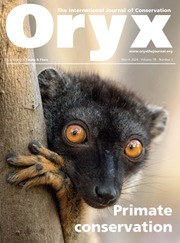The Bengal florican Houbaropsis bengalensis, a Critically Endangered ground-nesting bird native to Nepal, India and Cambodia, is at high risk of extinction because of habitat loss and anthropogenic disturbance. In Nepal, the species is confined to three protected areas: Chitwan and Shuklaphata National Parks and Koshi Tappu Wildlife Reserve, with the latter an important stronghold. However, significant anthropogenic disturbances persist, driven by the dependence of local communities on natural resources within the Reserve, cattle being abandoned in foraging areas and a lack of awareness about the Bengal florican and its habitat.
In response, our team implemented a series of education campaigns, supported by the Conservation Leadership Programme and in collaboration with the Koshi Bird Society, during 8 May–3 June 2024. The campaigns targeted students across 11 schools (six in Koshi, two in Chitwan and three in Shuklaphata), focusing on the distribution and ecology of the florican, and threats to its conservation. A drawing competition was also held to stimulate conservation interest, and pre- and post-campaign surveys unequivocally demonstrated a positive shift in awareness.
To reinforce these efforts, we distributed bookmarks featuring conservation messages, and selected bio-monitors from each workshop to promote birding and conservation in their communities. Additionally, we conducted four community workshops (two in Koshi and two in Chitwan), engaging > 250 stakeholders, including farmers, teachers and fishers, in discussions of conservation challenges and solutions. Overall, our campaigns engaged > 900 students and > 250 community members, contributing to Bengal florican conservation in Nepal.
To broaden our conservation outreach, we launched the Bengal Florican Project (bengalflorican.org), which aims to engage people in Nepal, India and Cambodia in the conservation of the species.


